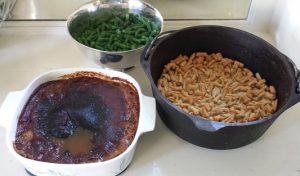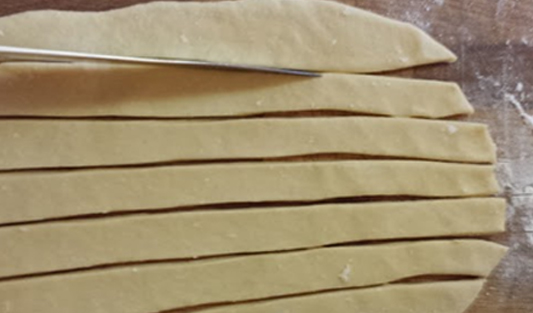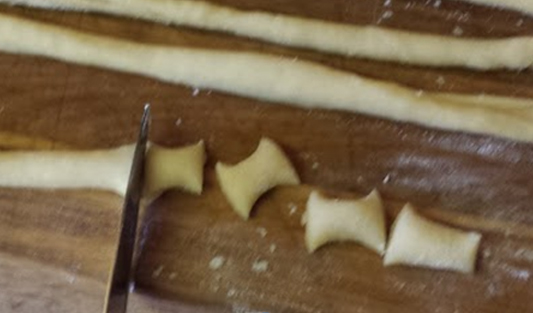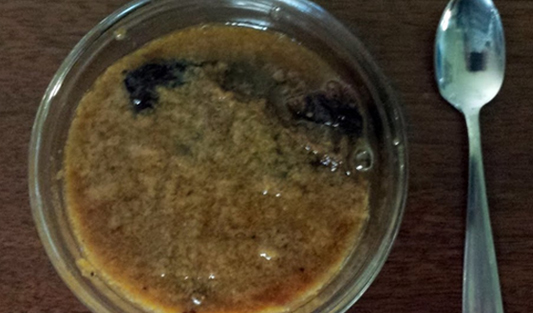 Most of us learned the song “Yankee Doodle Dandy” as schoolchildren, and many of us puzzled over the reference to macaroni in its lyrics. How could one confuse a feather for pasta, and did they even have macaroni back then? The short answer is, “yes,” but short answers are rarely as interesting as long ones.
Most of us learned the song “Yankee Doodle Dandy” as schoolchildren, and many of us puzzled over the reference to macaroni in its lyrics. How could one confuse a feather for pasta, and did they even have macaroni back then? The short answer is, “yes,” but short answers are rarely as interesting as long ones.
First, we must define the word “macaroni.” As used in the song (and at the time of the American Revolution), it is actually synonymous with “dandy” – someone who affects mannerisms of style that have little to do with his actual place in life. Specifically, in our context, it meant a British subject with Continental pretensions. Think “hipster” in today’s context, and you get the rough idea.
Modern macaroni, a tubular pasta product shaped with a distinctive half-circle bend, is technically known in Italy as “lumaconi,” and the word “macaroni” refers generally to the type of pasta dough used, and to the fact that it is usually dried and then boiled.
Thomas Jefferson, who was, in addition to a statesman and gifted articulator of the ideas of the Scottish Enlightenment, a well-travelled gourmand, kept notes about his favorite ways to use macaroni, and even recorded a recipe for making your own, in a pinch. Delightfully, the method given below even approximates the tubular shape of commercial macaroni.
Noodles à la Macaroni[i]

Beat until light:
3 eggs
Blend in:
1/2 cup (120 ml) milk
1/4 tsp (2 ml) salt
Add to make a stiff dough that is not sticky to the touch:
2 cups (450 ml) flour, plus more as needed
Divide into two or three batches, flour your pastry board and roll flat to a thickness of about 1/8″ (2 mm). Cut into 1/2″ (1 cm) wide strips.

Lift strips from board and roll between your hands loosely, shaping them into a rounded rope. Cut into 1/2″ (1 cm) lengths, and place onto a plate, not piled atop one another, lest they stick together.

Once you have a plate full, put into boiling water and cook for about 9 minutes, until tender. Remove and set aside. Continue until all of the dough is shaped and cooked.
Jefferson’s Dressed Macaroni[ii]
Preheat oven to 300° F (150 ° C). Grate into a bowl:
4 oz (60 g) good white cheddar
Slice into the same bowl:
1/2cup (120 ml) butter
Return the noodles to boiling water for a couple of minutes, until they float, drain and then mix in the cheese and butter.

Place, uncovered, into the oven for two hours, or until the top is browned. Serve warm.
This is a very different dish from today’s “mac and cheese,” but it’s a unique and tasty approach to the same basic ingredients. All that’s missing is the milk-and-flour white sauce, which was certainly known in the period.
French Beans, Boiled
From the first cookbook printed in America, Amelia Simmons’ American Cookery, we take this side dish[iii]:

This is the rare 18th-century recipe that really needs no interpretation. We might prefer to steam our vegetables today, but two centuries have not changed the flavor or basic preparation of French-cut beans.

Indian Pudding[iv]
Some dishes that we think “ought” to date back to the Revolution don’t even come close (viz the Shoo-Fly Pie, in the prior article in this series), but this is one where the contemporary sources are plentiful. Puddings made with cornmeal abounded, and most of them combined molasses, milk and spices, as does this version.
Preheat oven to 300° F (150° C). Grease a 2-quart (2-liter) casserole dish. In a large saucepan, heat and blend together:
4 cups(900 ml) milk
2/3 cup (175 ml) molasses
1/3 cup (90 ml) sugar
1/2 cup (120 ml) cornmeal
3/4 tsp (3 ml) cinnamon
3/4 tsp (3 ml) nutmeg
1 tsp (5 ml) salt
1/4 cup(60 ml) butter
Stir constantly until thickened; pour into prepared casserole. Pour over, and do not stir:
1 cup (225 ml) milk
Bake for approximately 3 hours, until top is brown and a knife inserted into the middle comes out clean. Serve warm.

[i] Kimball, Marie. Thomas Jefferson’s Cook Book. Charlottesville, Virginia: University Press of Virginia, 1976. 38. Print.
[ii] Kimball, Marie. Thomas Jefferson’s Cook Book. Charlottesville, Virginia: University Press of Virginia, 1976. 81. Print.
[iii] Simmons, Amelia. American Cookery. Hartford, Connecticut: Hudson & Goodwin, 1796. 45. Print.
[iv] O’Connor, Hyla. The Early American Cookbook. Englewood Cliffs, New Jersey: Prentice-Hall, Inc., 1974. 115. Print.









4 Comments
macaroni (American Heritage® Dictionary of the English Language)
1. pl. macaroni Pasta in any of various hollow shapes, especially short curved tubes.
2. pl. macaroni or mac·a·ro·nies
a. A well-traveled young Englishman of the 18th and 19th centuries who affected foreign customs and manners.
b. A fop.
Hello! I used your site as the basis of a living history project – you can check it out at the Ethan Allen Living History Project on Facebook (the website link above).
I truly appreciate these articles as an attempt to represent the culinary era. Those that enjoy these posts by Mr. Hedbor should also endeavor to check out Jas. Townsend & Son on YouTube for their 18th Century cooking series. Step by step process along with historical background (with accompanying blogs, etc.), the folks at Jas. Townsend do well to represent those aspects of food in the founding years.